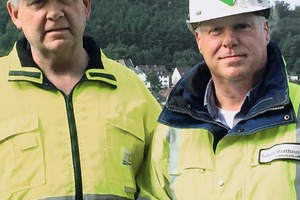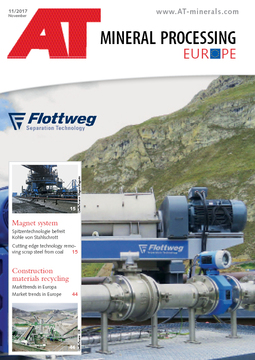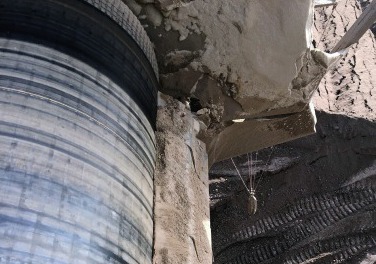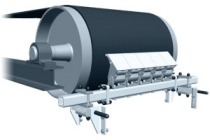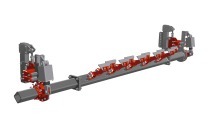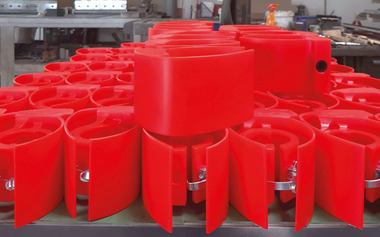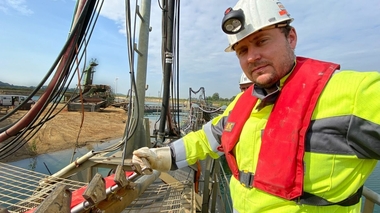Complete scraper replacement
Dipl.-Ing. Ulrich Kolhagen is a mining engineer. After completing his studies, he started work in an ore mine and since 1989 he says: “I’m a quarry man”. The 58-year old is operations manager at Hohenlimburger Kalkwerke, where Devonian hard limestone is quarried and treated. Kolhagen knows his business. The plant is one of the few in Germany that washes its material, putting high demands on the conveyer belt system. Some 40 belts ensure that the broken limestone, stone chippings and frost proof gravel reach their transfer points. “Scraper replacement is almost always a lengthy process”, says Kolhagen. It took almost two years before all the equipment (with a few exceptions) was replaced with Starclean scrapers from the German manufacturer Schulte Strathaus (a member of FESS Group). As the operations manager explained, it was a gradual process. When a scraper reached the end of its service life, it was replaced by a new one. Eight were replaced in one go during the winter overhaul. Kolhagen: “It’s only feasible with rational planning. Production has to continue.”
The need for what the company described as “a considerable investment” were poor cleaning results. “There was too much carryback underneath and next to the belts”. Differing granulations and humidity of the material being transported put the scrapers under relatively high stress, particularly since quite a large amount of fine material demands fine scraping. Belt centre distances are between 7 and 220 m, with belt widths between 650 and 1400 mm. Many aspects had to be taken into consideration during the refitting, according to the operations manager. The material from which Starclean scrapers are made – polyurethane for the primary scraper and a combination of polyurethane and carbide for the secondary scraper – is very important. Together with the right contact pressure, this guarantees consistently good cleaning results. The average service life of the blades is at least two years, after which they must be replaced.
“The investment has paid off for us," says Kolhagen. The new scrapers have proven their worth, cleaning quality is good and fulfils expectations. Blades can be easily replaced without any tools and since their service life is relatively high, there is less work for the fitters. There has been an overall decrease in maintenance and servicing needs and the whole plant’s process reliability has increased.
$(LEhttp://

